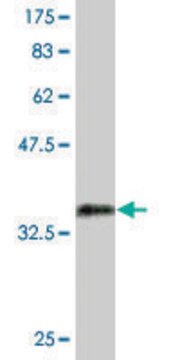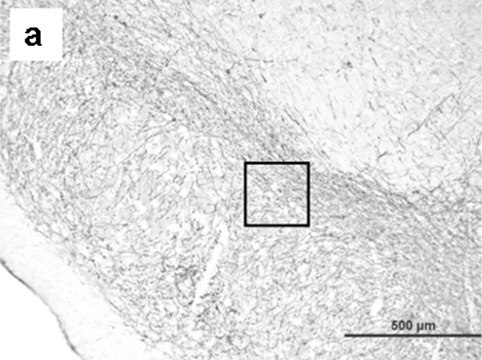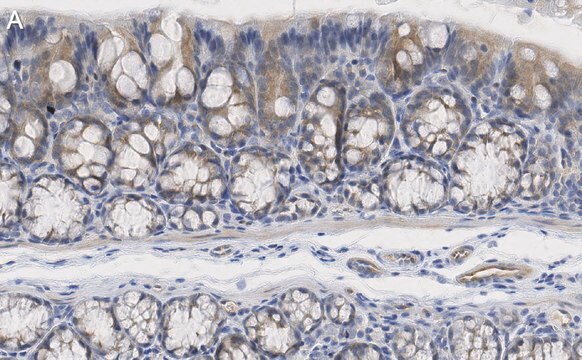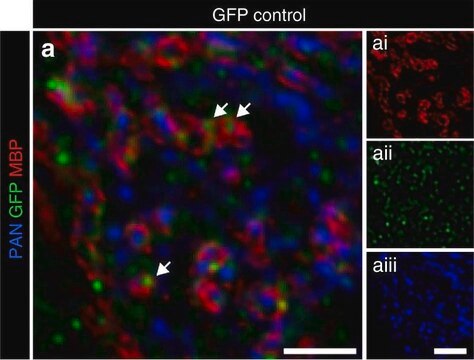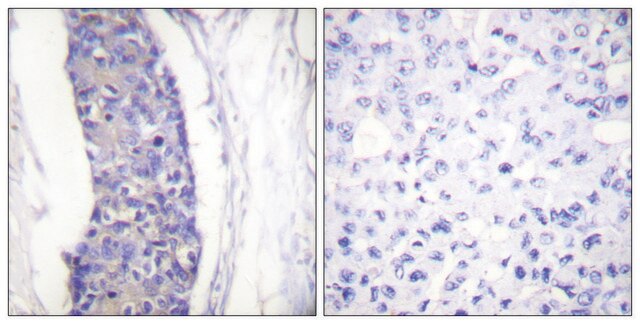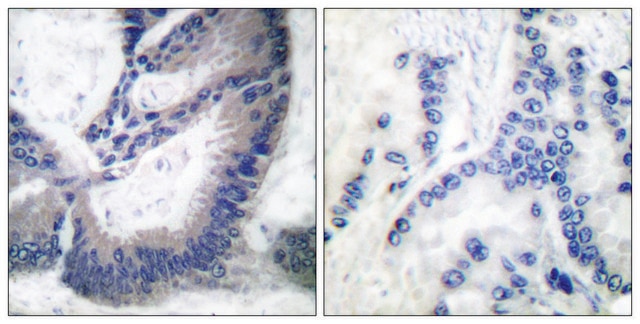AB5382
Anti-Nitric Oxide Synthase II Antibody
serum, Chemicon®
Synonym(e):
NOS II, iNOS
About This Item
Empfohlene Produkte
Biologische Quelle
rabbit
Qualitätsniveau
Antikörperform
serum
Antikörper-Produkttyp
primary antibodies
Klon
polyclonal
Speziesreaktivität
mouse, rat
Hersteller/Markenname
Chemicon®
Methode(n)
immunocytochemistry: suitable
immunohistochemistry: suitable
western blot: suitable
NCBI-Hinterlegungsnummer
UniProt-Hinterlegungsnummer
Versandbedingung
dry ice
Posttranslationale Modifikation Target
unmodified
Angaben zum Gen
mouse ... Nos2(18126)
rat ... Nos2(24599)
Allgemeine Beschreibung
Spezifität
Immunogen
Anwendung
Neurowissenschaft
Oxidativer Stress
1:5000 (ABC) dilution of a previous lot was used on tissue sections (rat liver).
Immunocytochemistry:
1:50,000 dilution of a previous lot was used on cultured cells.
Western blot:
1:5,000 (ECL). The antibody has been used successfully on rat liver. It is not recommended for use on rat brain extracts since unidentified bands may be present.
Optimal working dilutions must be determined by end user.
Qualität
Western Blot Analysis:
1:1000 dilution of this antibody detected INOS on 10 µg of Mouse liver lysates.
Zielbeschreibung
Physikalische Form
Lagerung und Haltbarkeit
Handling Recommendations: Upon first thaw, and prior to removing the cap, centrifuge the vial and gently mix the solution. Aliquot into microcentrifuge tubes and store at -20°C. Avoid repeated freeze/thaw cycles, which may damage IgG and affect product performance.
Hinweis zur Analyse
Macrophages, liver lysates
Sonstige Hinweise
Rechtliche Hinweise
Haftungsausschluss
Not finding the right product?
Try our Produkt-Auswahlhilfe.
Lagerklassenschlüssel
10 - Combustible liquids
WGK
WGK 1
Analysenzertifikate (COA)
Suchen Sie nach Analysenzertifikate (COA), indem Sie die Lot-/Chargennummer des Produkts eingeben. Lot- und Chargennummern sind auf dem Produktetikett hinter den Wörtern ‘Lot’ oder ‘Batch’ (Lot oder Charge) zu finden.
Besitzen Sie dieses Produkt bereits?
In der Dokumentenbibliothek finden Sie die Dokumentation zu den Produkten, die Sie kürzlich erworben haben.
Artikel
The term neurodegeneration characterizes a chronic loss of neuronal structure and function leading to progressive mental impairments.
Unser Team von Wissenschaftlern verfügt über Erfahrung in allen Forschungsbereichen einschließlich Life Science, Materialwissenschaften, chemischer Synthese, Chromatographie, Analytik und vielen mehr..
Setzen Sie sich mit dem technischen Dienst in Verbindung.
